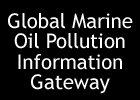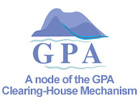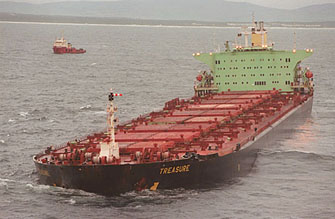|
International
actors and agreements in the region
 See
Global action and Global
actors.
See
Global action and Global
actors.
 UN
Economic Commission for Africa (UNECA). ••>
UN
Economic Commission for Africa (UNECA). ••>
 UNEP
Regional Office for Africa (ROA). ••>
UNEP
Regional Office for Africa (ROA). ••>
 UNEP
Regional Seas Programme. ••>
UNEP
Regional Seas Programme. ••>
 UNEP Global programme of action for the protection of
the marine environment from land-based activities (UNEP
GPA). ••>
UNEP Global programme of action for the protection of
the marine environment from land-based activities (UNEP
GPA). ••>
 International
Coral Reef Initiative and other organizations and
networks on
the threats to coral reefs.
International
Coral Reef Initiative and other organizations and
networks on
the threats to coral reefs.
 Small Island Developing States Network (SIDSnet).
••>
Small Island Developing States Network (SIDSnet).
••>
Regional
conventions, agreements, action plans and actors
 Convention for the Protection, Management and Development
of the Marine and Coastal Environment of the Eastern
African Region (Nairobi Convention). ••>
Convention for the Protection, Management and Development
of the Marine and Coastal Environment of the Eastern
African Region (Nairobi Convention). ••>
 Indian Ocean MoU on Port State Control. ••>
Indian Ocean MoU on Port State Control. ••>
 Southern
and East African Waste Management Network (SEA WASTE).
Serves as a platform for information exchange and cooperation
on pollution issues that impact on all aquatic environments
in Southern and East Africa. Represents an informal
forum for dialogue and capacity-building in waste management
research, policy development and implementation and
wider public education. Presently constitutes members
from Botswana, Comoros, Kenya, Madagascar, Malawi, Mauritius,
Mozambique, Namibia, Seychelles, South Africa, Tanzania
and Zimbabwe - but involvement is not restricted to
these areas.
Southern
and East African Waste Management Network (SEA WASTE).
Serves as a platform for information exchange and cooperation
on pollution issues that impact on all aquatic environments
in Southern and East Africa. Represents an informal
forum for dialogue and capacity-building in waste management
research, policy development and implementation and
wider public education. Presently constitutes members
from Botswana, Comoros, Kenya, Madagascar, Malawi, Mauritius,
Mozambique, Namibia, Seychelles, South Africa, Tanzania
and Zimbabwe - but involvement is not restricted to
these areas.
 GEF International Waters Projects. ••>
GEF International Waters Projects. ••>
 African Development Bank. ••>
African Development Bank. ••>
 Secretariat
for Eastern African Coastal Area Management (SEACAM).
••>
Secretariat
for Eastern African Coastal Area Management (SEACAM).
••>
 World Bank-GEF-Biodiversity:
Biodiversity Conservation and Marine Pollution Abatement,
Seychelles. The marine pollution component of the
project covers the analysis of the steps needed to comply
with MARPOL standards for shipwaste treatment and actions
required to control pollution from commercial shipping,
fishing and leisure craft.
World Bank-GEF-Biodiversity:
Biodiversity Conservation and Marine Pollution Abatement,
Seychelles. The marine pollution component of the
project covers the analysis of the steps needed to comply
with MARPOL standards for shipwaste treatment and actions
required to control pollution from commercial shipping,
fishing and leisure craft.
 World Bank–GEF: Programme
régional de Lutte contre les Déversements
d'Hydrocarbures (Western Indian Ocean Islands Oil
Spill Contingency Planning). The project financed by
World Bank/GEF includes the Comores, Mauritius, the
Seychelles, Madagascar, and Reunion. Co-ordinated by
a Programme Management Unit located at the Commission
de l'Océan Indien (Indian Ocean Commission).
World Bank–GEF: Programme
régional de Lutte contre les Déversements
d'Hydrocarbures (Western Indian Ocean Islands Oil
Spill Contingency Planning). The project financed by
World Bank/GEF includes the Comores, Mauritius, the
Seychelles, Madagascar, and Reunion. Co-ordinated by
a Programme Management Unit located at the Commission
de l'Océan Indien (Indian Ocean Commission).
National
action
Kenya
 The Kenya Ports Authority (KPA), under the Kenya Ports
Authority Act, has theƒ responsibility for controlling
pollution in the territorial waters of Kenya. In fulfilment
of this responsibility, the KPA, together with representatives
of the oil industry, the oil refinery, the shipping
industry and bunkering services, has set up the National
Oil Spill Response Committee (NOSRC) which has developed
a National
Oil Spill Response Contingency Plan.
The Kenya Ports Authority (KPA), under the Kenya Ports
Authority Act, has theƒ responsibility for controlling
pollution in the territorial waters of Kenya. In fulfilment
of this responsibility, the KPA, together with representatives
of the oil industry, the oil refinery, the shipping
industry and bunkering services, has set up the National
Oil Spill Response Committee (NOSRC) which has developed
a National
Oil Spill Response Contingency Plan.
South
Africa
 Ministry
of Environmental Affairs and Tourism: Marine
and Aquatic Pollution Control.
Ministry
of Environmental Affairs and Tourism: Marine
and Aquatic Pollution Control.
 Jolly Rubino oil spill, 2002: Department
of Environmental Affairs and Tourism on the oil spill
cleanup.
Jolly Rubino oil spill, 2002: Department
of Environmental Affairs and Tourism on the oil spill
cleanup.
 Treasure
oil spill, 2000: University of Cape Town, Avian Demography
Unit, Department of Statistical Sciences: A
'Treasure' story (part of "The
Treasure oil spill: Effects on the wildlife of Table
Bay and particularly on the endangered African Penguin".)
See also IBRRC: Treasure
Spill Report. ••• Dpt
of Environmental Affairs and Tourism on the oil spill
cleanup.
Treasure
oil spill, 2000: University of Cape Town, Avian Demography
Unit, Department of Statistical Sciences: A
'Treasure' story (part of "The
Treasure oil spill: Effects on the wildlife of Table
Bay and particularly on the endangered African Penguin".)
See also IBRRC: Treasure
Spill Report. ••• Dpt
of Environmental Affairs and Tourism on the oil spill
cleanup.
|
 |
Regional
reports on the state of the marine and coastal environment
 UNEP
Regional Seas: "Oil
is a major pollution threat to coastal ecosystems,
owing to the heavy use of the tanker route along the
East African coast. On any given day there are hundreds
of tankers in the Region, many of them Very Large Crude
Carriers (VLCCs). Slicks are brought in from spills
in the open ocean by coastal currents, while operational
discharges from ships and refineries add to the load".
UNEP
Regional Seas: "Oil
is a major pollution threat to coastal ecosystems,
owing to the heavy use of the tanker route along the
East African coast. On any given day there are hundreds
of tankers in the Region, many of them Very Large Crude
Carriers (VLCCs). Slicks are brought in from spills
in the open ocean by coastal currents, while operational
discharges from ships and refineries add to the load".
 UNEP: Africa Environmental Outlook: Pollution
of Eastern Africa's coastal and marine environment:
"The coastal waters of the Red Sea and Western
Indian Ocean are the major sea routes for large petroleum
and oil tankers supplying the world with products from
the Middle East. Major shipping routes run close to
the coral reefs near the port of Djibouti and Port Sudan
and ships often discharge oily wastes and sewage. Ships
also cause physical damage to the reefs when poor navigation
brings them into collision with the reefs. Longshore
currents and winds in the Western Indian Ocean are instrumental
in the horizontal distribution and spread of pollutants,
particularly in bringing oil slicks from the open sea
(beyond the EEZ limit) into the coastal waters. In addition
to the elevated risk of high-impact oil spills, frequent
transport operations also contribute to oil pollution—oil
tankers often empty ballast and wash engines on the
high seas and residues of degraded oil are consolidated
and washed ashore by onshore winds, currents and waves.
Tar balls litter beaches with deleterious effects on
wildlife and on humans that use the beaches. Soluble
PCBs from these products poison marine life and accumulate
in the food web, causing physiological disorders in
top predators."
UNEP: Africa Environmental Outlook: Pollution
of Eastern Africa's coastal and marine environment:
"The coastal waters of the Red Sea and Western
Indian Ocean are the major sea routes for large petroleum
and oil tankers supplying the world with products from
the Middle East. Major shipping routes run close to
the coral reefs near the port of Djibouti and Port Sudan
and ships often discharge oily wastes and sewage. Ships
also cause physical damage to the reefs when poor navigation
brings them into collision with the reefs. Longshore
currents and winds in the Western Indian Ocean are instrumental
in the horizontal distribution and spread of pollutants,
particularly in bringing oil slicks from the open sea
(beyond the EEZ limit) into the coastal waters. In addition
to the elevated risk of high-impact oil spills, frequent
transport operations also contribute to oil pollution—oil
tankers often empty ballast and wash engines on the
high seas and residues of degraded oil are consolidated
and washed ashore by onshore winds, currents and waves.
Tar balls litter beaches with deleterious effects on
wildlife and on humans that use the beaches. Soluble
PCBs from these products poison marine life and accumulate
in the food web, causing physiological disorders in
top predators."
 UNEP:
Africa Environmental Outlook: Pollution
of Western Indian Ocean Islands coastal and marine environment:
"The increasing use of motorized vessels rather
than human or sail-power for fishing and pleasure craft
is increasing pressure on the environment by causing
oil slicks and by direct physical damage from boat propellers.
There is also a high risk of major oil spills, given
that 30 per cent of all oil exports from the Near East
pass through the sub-region. This high level of transport
traffic also exposes the marine and coastal environments
to oil pollution through discharge of ballast water
and oil leaks."
UNEP:
Africa Environmental Outlook: Pollution
of Western Indian Ocean Islands coastal and marine environment:
"The increasing use of motorized vessels rather
than human or sail-power for fishing and pleasure craft
is increasing pressure on the environment by causing
oil slicks and by direct physical damage from boat propellers.
There is also a high risk of major oil spills, given
that 30 per cent of all oil exports from the Near East
pass through the sub-region. This high level of transport
traffic also exposes the marine and coastal environments
to oil pollution through discharge of ballast water
and oil leaks."
 UNEP GPA: Assessment
of Land-based Sources and Activities Affecting the Marine,
Coastal and Associated Freshwater Environment in the
Eastern African Region.
UNEP GPA: Assessment
of Land-based Sources and Activities Affecting the Marine,
Coastal and Associated Freshwater Environment in the
Eastern African Region.
 UNEP
Regional Seas: Eastern Africa: The environment: Threats.
Pollution.
UNEP
Regional Seas: Eastern Africa: The environment: Threats.
Pollution.

 UNECA:
State
of the Environment in Africa
UNECA:
State
of the Environment in Africa
 UNEP: Global
Environment Outlook 3 (GEO3). Coastal and marine
areas.
UNEP: Global
Environment Outlook 3 (GEO3). Coastal and marine
areas.
 University
of Rhode Island: Large Marine Ecosystems (LME): The
region includes the
Agulhas Current and the
Somalia Coastal Current
University
of Rhode Island: Large Marine Ecosystems (LME): The
region includes the
Agulhas Current and the
Somalia Coastal Current
National state of the environment reports
South
Africa
 UNEP GRID:
State of the environment – South Africa: "Pressures
associated with shipping include operational and major
oil spills and the discharge of ballast water and waste
from vessels. Oil spills and discharge of ballast water
lower marine water quality making it less suitable for
human as well as marine ecosystem functions, particularly
around commercial ports. Driving
forces: South Africa is situated on one of the world's
busiest ship transport routes, particularly for the
transport of crude oil from the Middle East to Europe
and the Americas. Over 4,000 ships pass the Cape of
Good Hope every year, and R4.2 billion in revenue is
generated every year by transporting cargo through South
African ports. Shipping which is routed around the Cape
is exposed to extremes of weather and sea conditions.
This greatly increases the risk of major marine pollution
incidents, particularly from oil tankers, but also from
those with more lethal cargoes such as nuclear waste,
which, should a shipping disaster occur could have devastating
consequences for human coastal communities, and not
just marine life and the dependent economic activities".
UNEP GRID:
State of the environment – South Africa: "Pressures
associated with shipping include operational and major
oil spills and the discharge of ballast water and waste
from vessels. Oil spills and discharge of ballast water
lower marine water quality making it less suitable for
human as well as marine ecosystem functions, particularly
around commercial ports. Driving
forces: South Africa is situated on one of the world's
busiest ship transport routes, particularly for the
transport of crude oil from the Middle East to Europe
and the Americas. Over 4,000 ships pass the Cape of
Good Hope every year, and R4.2 billion in revenue is
generated every year by transporting cargo through South
African ports. Shipping which is routed around the Cape
is exposed to extremes of weather and sea conditions.
This greatly increases the risk of major marine pollution
incidents, particularly from oil tankers, but also from
those with more lethal cargoes such as nuclear waste,
which, should a shipping disaster occur could have devastating
consequences for human coastal communities, and not
just marine life and the dependent economic activities".
Private
sector and NGOs actors and initiatives
  Oilwatch. ••>
Oilwatch. ••>
 International Tanker Owners Pollution Federation (ITOPF).
••>
International Tanker Owners Pollution Federation (ITOPF).
••>
 International Directory of Oil Spill Cleanup Contractors
and Response Organisations. ••>
International Directory of Oil Spill Cleanup Contractors
and Response Organisations. ••>
 International Petroleum Industry Environmental Conservation
Association (IPIECA). ••>
International Petroleum Industry Environmental Conservation
Association (IPIECA). ••>
|




